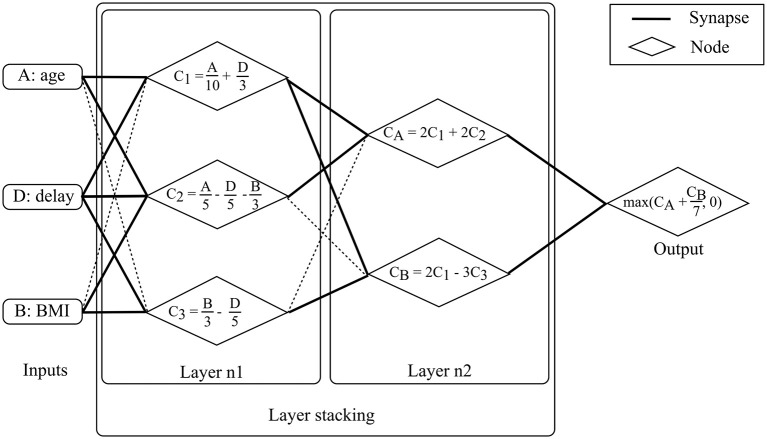Figure 6.
Neural Network model for prognosis. The available data consist of basic demographic and clinical features: age, BMI and diagnostic delay. For patient 0, these features are 50, 15kg/m2, and 15 months, respectively. The objective is to predict ALSFRS-r in 1 year. The multi-layer perceptron consists of two layers. Nodes are fed by input with un-shaded arrows. At layer 1, the three features are combined linearly to compute three node values, C1, C2, and C3. C1 is a linear combination of age and delay, C2 is a linear combination of age, delay and BMI, and C3 is a linear combination of BMI and delay. For patient 0, computing the three values returns 10, 2, and 2 for C1, C2, and C3, respectively. At layer 2, outputs from layer 1 (i.e., C1, C2, and C3) are combined linearly to compute two values, CA and CB. CA is a linear combination of C1 and C2 while CB is a linear combination of C1 and C3. For patient 0, computing the two values gives 24 and 14 for CA and CB, respectively. Model output is computed after computing linear combination of CA and CB and applying a non-linear function (in this case a maximum function which can be seen as a thresholding function which accepts only positive values). The output is the predicted motor functions decline rate. For patient 0, the returned score is 26.

